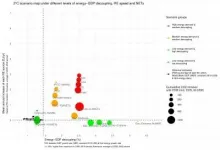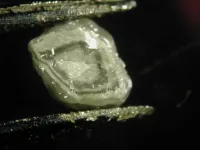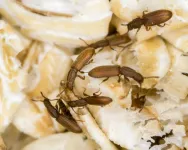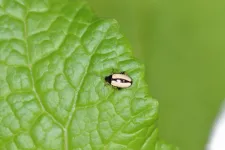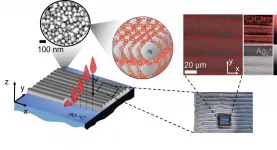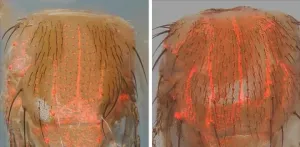Degrowth focuses on the global North and is defined as an equitable, democratic reduction in energy and material use while maintaining wellbeing. A decline in GDP is accepted as a likely outcome of this transition.
The new modelling by the University of Sydney and ETH Zürich includes high growth/technological change and scenarios summarised by the Intergovernmental Panel on Climate Change (IPCC) as a comparison to degrowth pathways. It shows that by combining far-reaching social change focused on sufficiency as well as technological improvements, net-zero carbon emissions can be more easily achieved technologically.
The findings published today in Nature Communications.
Currently the IPCC and the established modelling community, integrated assessment model (IAM), does not consider degrowth scenarios where reduced production and consumption in the global North is combined with maintaining wellbeing and achieving climate goals. In contrast, established scenarios rely on combinations of unprecedented carbon dioxide removal from the atmosphere and other far-reaching technological changes.
The results show the international targets of capping global warming to 1.5C-2C above pre-Industrial levels can be achieved more easily in key dimensions, for example: 1. Degrowth in the global North/high-income countries results in 0.5% annual decline of global GDP. However, a substantially increased uptake of renewable energy coupled with negative emissions remains necessary, albeit significantly less than in established pathways. 2. Capping warming to the upper limit of 2C can be achieved with 0 percent growth, while being consistent with low levels of carbon dioxide removal (i.e. from tree planting) and increases in renewable energy as well as energy efficiency.
Lead author, Mr Lorenz Keyßer, from ETH Zürich whose Master's thesis is on degrowth, carried out the research in Australia under supervision of global leader in carbon footprinting Professor Manfred Lenzen, from the University of Sydney's centre for Integrated Sustainability Analysis (ISA) in the School of Physics.
Mr Keyßer said he was surprised by the clarity of the results: "Our simple model shows degrowth pathways have clear advantages in many of the central categories; it appears to be a significant oversight that degrowth is not even considered in the conventional climate modelling community.
"The over-reliance on unprecedented carbon dioxide removal and energy efficiency gains means we risk catastrophic climate change if one of the assumptions does not materialise; additionally, carbon dioxide removal shows high potential for severe side-effects, for instance for biodiversity and food security, if done using biomass. It thus remains a risky bet.
"Our study also analysed the other key assumption upon which the modelling of the IPCC and others is based: continued growth of global production and consumption."
The senior author Professor Lenzen said the technological transformation is particularly extraordinary given the scale of carbon dioxide removal assumed in the IPCC Special Report, Global warming of 1.5C, of between 100-1000 billion tonnes (mostly over 600 GtCO2) by 2100; in large part through bioenergy to carbon capture and storage (BECCS) as well as through afforestation and reforestation (AR).
"Deployment of controversial 'negative emissions' future technologies to try to remove several hundred gigatonnes [hundreds of billion tonnes] of carbon dioxide assumed in the IPCC scenarios to meet the 1.5C target faces substantial uncertainty," Professor Lenzen says.
"Carbon dioxide removal (including carbon capture and storage or CCS) is in its infancy and has never been deployed at scale."
WHAT DEGROWTH MIGHT LOOK LIKE
The new modelling was undertaken pre-COVID-19 but the degrowth pathways are based on a fraction of global GDP shrinkage of some 4.2% experienced in the first six months of the pandemic. Degrowth also focuses on structural social change to make wellbeing independent from economic growth.
"We can still satisfy peoples' needs, maintain employment and reduce inequality with degrowth, which is what distinguishes this pathway from recession," Mr Keyßer says.
"However, a just, democratic and orderly degrowth transition would involve reducing the gap between the haves and have-nots, with more equitable distribution from affluent nations to nations where human needs are still unmet - something that is yet to be fully explored."
A 'degrowth' society could include: · A shorter working week, resulting in reduced unemployment alongside increasing productivity and stable economic output. · Universal basic services independent of income, for necessities i.e. food, health care, transport. · Limits on maximum income and wealth, enabling a universal basic income to be increased and reducing inequality, rather than increasing inequality as is the current global trend.
Among the 1.5C degrowth pathways explored in the new research, the Decent Living Energy (DLE) scenario is closest to historical trends for renewable energy and negligible 'negative emissions'. Mr Keyßer says the International Energy Agency projections for renewables growth to 2050 based on past trends are roughly equivalent to the DLE pathway modelled.
"That non-fossil energy sources could meet 'decent living energy' requirements while achieving 1.5C - under conditions close to business-as-usual - is highly significant.
"However it is clear that the DLE pathway remains extremely challenging due to the substantial reduction in energy use as well as the connected deep social changes required," Mr Keyßer says.
MODELLING CLIMATE PATHWAYS
For the study, a simplified quantitative representation of the fuel-energy-emissions nexus was used as a first step to overcome what the authors believe is an absence of comprehensive modelling of degrowth scenarios in mainstream circles like the IAM community and IPCC. The model is accessible in open access via the paper online.
A total of 18 scenarios were modelled under three main categories to reach 1.5C-2C: 1. Degrowth and 'decent living energy', looking at low energy-GDP decoupling. 2. Medium energy-GDP decoupling including approximated IPCC scenarios. 3. High energy-GDP decoupling (strong-to-extreme technology pathways/energy efficiency driving separation between economic growth and emissions).
Mr Keyßer says: "This study demonstrates the viability of degrowth in minimising several key feasibility risks associated with technology-driven pathways, so it represents an important first step in exploring degrowth climate scenarios."
Professor Lenzen concludes: "A precautionary approach would suggest degrowth should be considered, and debated, at least as seriously as risky technology-driven pathways upon which the conventional climate policies have relied."
INFORMATION:
